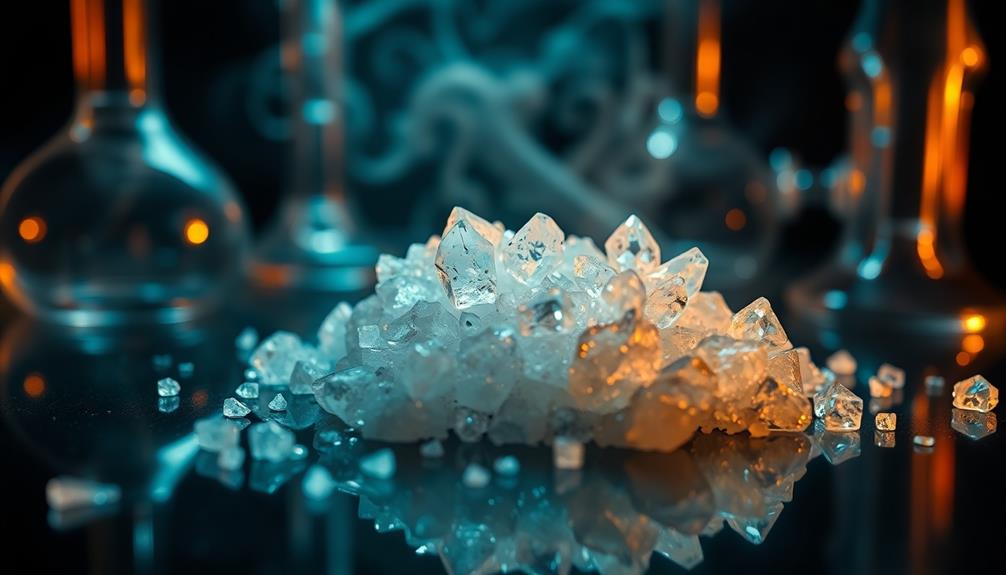Crystal meth has a strong chemical smell that's hard to ignore. You might notice it smells like ammonia or even cat urine, with some hints of rotten eggs. When it's smoked, the odor can remind you of burning plastic, which is really unpleasant. The smell can be stronger with lower-quality meth because of impurities. This odor often lingers in closed spaces, so if you catch a whiff, it could mean something risky is happening nearby. Understanding this smell helps keep you safe and aware. Curious to know more about the effects and dangers? You'll find more interesting insights ahead!
Key Takeaways
- Crystal meth has a strong chemical odor resembling ammonia, cat urine, or rotten eggs, often described as acrid or burnt plastic when smoked.
- The smell can vary in intensity; higher purity meth tends to have fewer noticeable odors compared to lower-quality meth.
- Users sometimes report a sweet smell akin to ether or solvents, but the overall scent is overwhelmingly harsh.
- Chemical odors can linger in enclosed spaces long after use, indicating potential drug activity or manufacturing.
- Noticing unusual chemical smells should prompt immediate evacuation and reporting to law enforcement for safety concerns.
Introduction
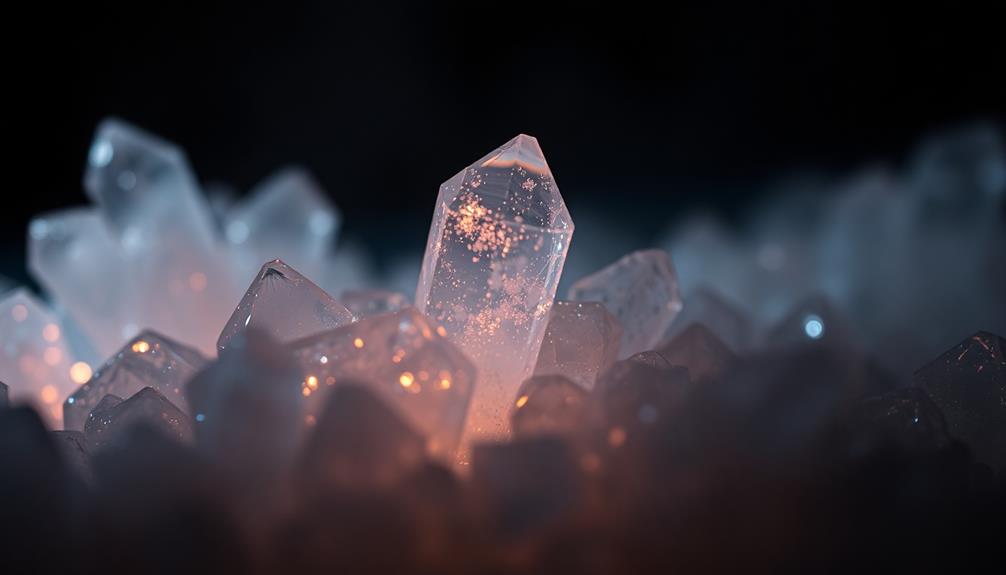
Crystal meth, a potent and highly addictive stimulant, is notorious not just for its effects but also for its unmistakable smell. This strong chemical odor can be a crucial sign of meth production or use in your area. Users often describe the smell as ammonia-like, similar to cat urine or rotten eggs. Prolonged exposure to these harsh fumes can lead to respiratory irritation and other health concerns, particularly for individuals living near production sites. It’s also worth noting that some individuals may misinterpret everyday smells due to unusual sensory symptoms in schizophrenia, which can complicate the identification of meth-related odors. This sensory distortion can make it difficult for them to differentiate between genuine environmental hazards and hallucinatory experiences.
You might notice that the odor varies based on the drug's purity. Impurities can create even stronger chemical smells, resembling burning plastic or solvents.
When smoked, crystal meth produces a burnt, acrid scent that lingers in the air and on surfaces, especially in enclosed spaces. If you're near a location where meth is manufactured, the smell can be even more intense due to the harsh chemicals involved in its production.
Recognizing this specific smell can help you identify possible illicit activity around you.
Understanding the dangers of crystal meth, including its impact on health and the risk of addiction, is essential. By being aware of the signs and the smell, you can take action and report any suspicious activity to the authorities.
Together, we can work towards a healthier community.
Description of the Smell
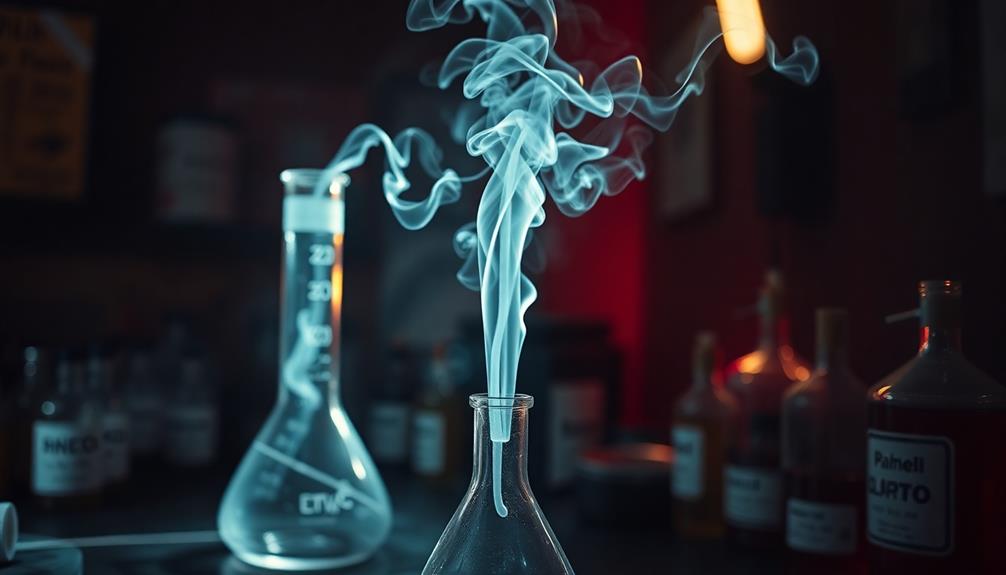
The smell of crystal meth is unmistakable and can be quite alarming. When you encounter it, you might notice a strong chemical odor that resembles ammonia or even cat urine. This unpleasant scent can be hard to ignore, especially if you're close to where it's being used or made.
Some people describe a sweet smell, similar to ether or solvents, which often comes from the chemicals used in production.
If crystal meth is smoked, it gives off an acrid smell akin to burning plastic or harsh chemicals. This odor can be particularly intense in enclosed spaces, making it even more noticeable.
The crystal meth smell can vary based on its purity; lower-quality meth often has more impurities, leading to stronger and more offensive odors.
You might also catch lingering odors in areas where illicit activity takes place. These smells can stick around long after the drug has been used, serving as a telltale sign of what's happened nearby.
Recognizing these scents can be crucial for understanding the environment and staying safe. Awareness of these smells is the first step in identifying potential risks related to crystal meth.
Source and Composition
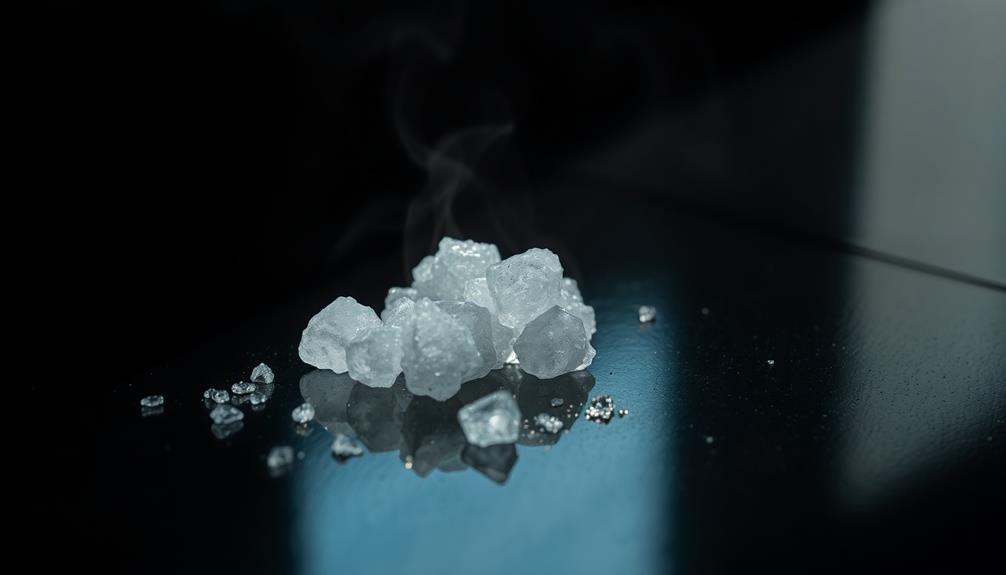
Methamphetamine, specifically in its crystal form, derives from a complex process involving various hazardous chemicals. The smell of meth often comes from the chemicals used in its production, which include anhydrous ammonia, acetone, and lithium. These substances create a strong chemical odor, making the distinct smell of crystal meth easily recognizable, especially during cooking.
When meth is being produced, you might notice ammonia-like scents that resemble cat urine or rotten eggs. This powerful smell alone can be a warning sign of illicit production in the area.
The purity of the crystal meth can also impact its odor; higher purity levels may produce fewer noticeable smells, while impurities lead to stronger chemical odors.
It's important to understand that the intense chemical smells can linger in enclosed spaces, hinting at potential health risks associated with exposure. The production of meth isn't only highly dangerous due to the chemicals involved but also poses serious health risks for anyone nearby.
Typical Scenarios or Environments

In various settings, you might encounter the distinct odors associated with crystal meth use and production. The smell of this drug can be incredibly strong. For instance, in places where users smoke meth, you'll often notice a burnt chemical smell, similar to burning plastic or rubber.
When meth is produced in secret labs, the environment might release acrid odors reminiscent of ammonia or even cat urine. These smells can stick around long after the activity has stopped, indicating potential illegal production.
If you see unusual ventilation systems in a home, it could be a sign that the area is retaining those chemical odors, which is a red flag.
Moreover, the scent can change based on the purity of the meth. The more impurities in the drug, the stronger and more complex the chemical odors might be.
If you detect these distinct smells in your neighborhood, it serves as a warning sign. It's crucial to report such findings to local authorities. Staying aware of these odors can help keep your environment safer and more informed about potential drug activity.
Emotional or Cultural Associations
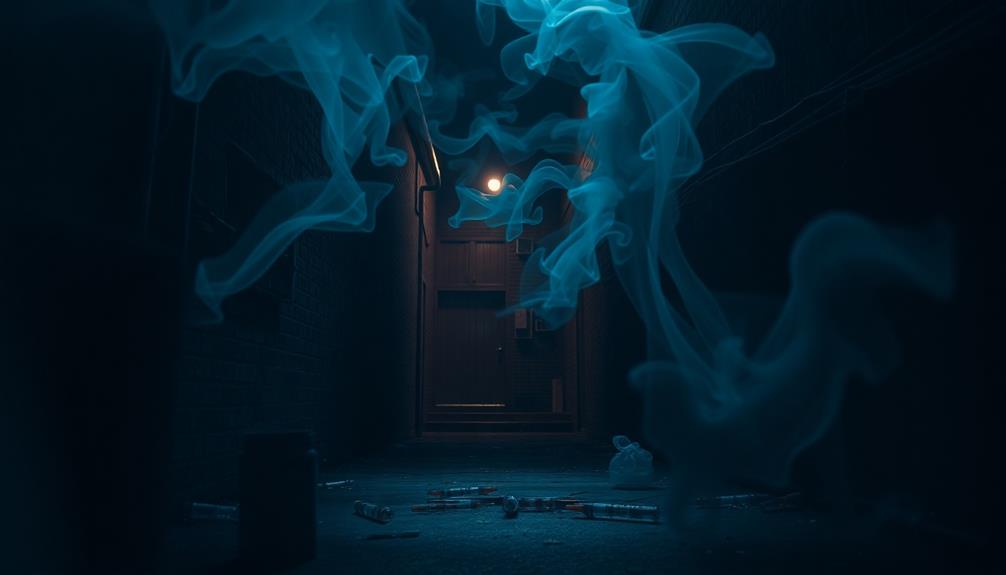
For many people, encountering the acrid smell of crystal meth can trigger intense emotional responses rooted in fear and anxiety. This unpleasant smell often connects to memories of addiction and crime, reinforcing negative feelings. Cultural portrayals in movies and TV shows depict the harsh realities of meth use, making the smell even more alarming.
In communities affected by meth addiction, the odor serves as a reminder of the struggles faced by individuals and families, creating a shared sense of trauma. For those in recovery, the scent can bring back memories of past substance use, complicating their journey toward sobriety. It can feel like a haunting reminder of a difficult time, making recovery even tougher.
Additionally, the social stigma surrounding meth use is often tied to its smell. This stigma can lead to feelings of shame and isolation among users and their loved ones. The fear of being judged makes it harder for them to seek help and support.
Understanding these emotional reactions can help us foster compassion and awareness, encouraging conversations that address the challenges of addiction and recovery.
Health or Safety Considerations
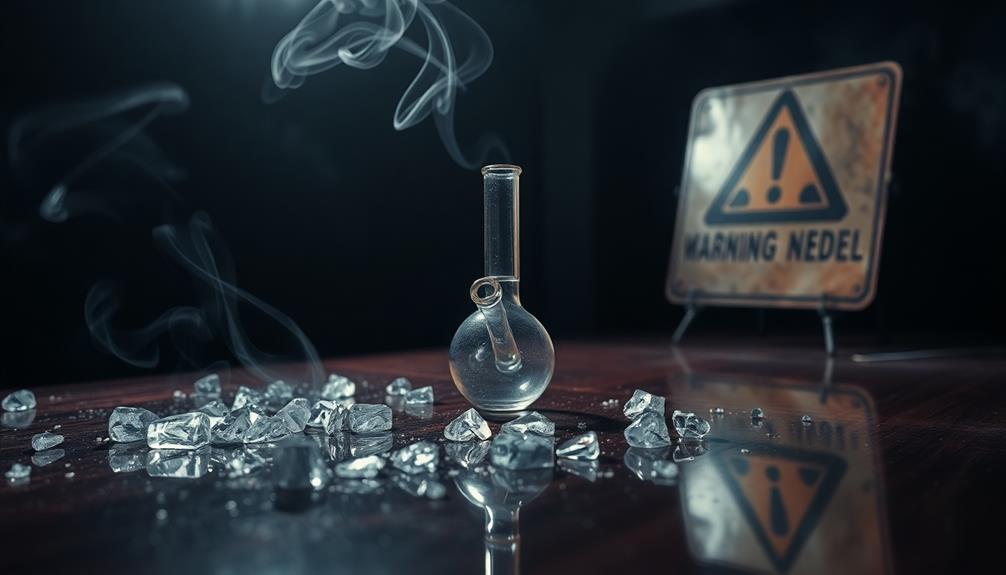
Crystal meth can pose serious health and safety risks due to its distinct ammonia-like odor, often compared to cat urine or rotten eggs. This smell is often more intense in enclosed spaces where meth is produced or used.
If you're exposed to a meth environment, you might face chemical burns and various health issues, including respiratory problems and skin irritations.
Long-term exposure to these odors isn't just unpleasant; it can lead to major health complications. If you ever notice unusual chemical smells that remind you of crystal meth, it's crucial to evacuate the area immediately.
Report the situation to local law enforcement, as the presence of such odors often indicates illegal meth production and hazardous conditions.
Being aware of the signs of meth production can help keep you safe. Remember, substance abuse linked to meth can affect not just the users but also those around them.
Always prioritize your health or safety considerations. Good ventilation can help reduce lingering odors, but it's best to stay clear of areas where these risky activities are happening.
Stay informed and safe!
Final Thoughts
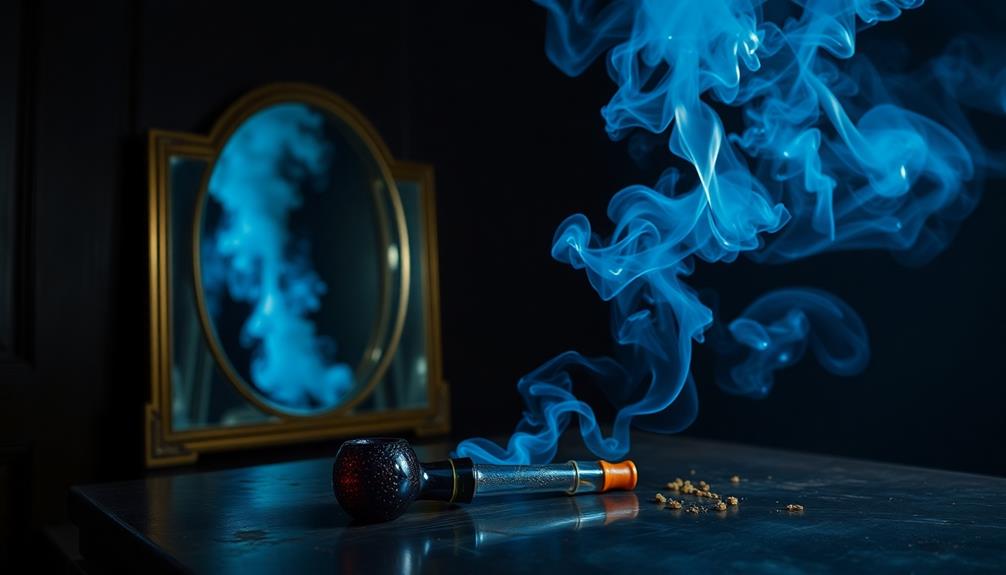
Understanding the dangers and distinct odors associated with crystal meth is essential for maintaining your safety and well-being.
The smell of crystal meth can vary, often described as a chemical odor resembling cat urine or rotten eggs, especially during meth production. When smoked, it emits a strong burnt chemical smell similar to burning plastic.
Recognizing these odors is crucial for early detection of meth use or production, which can help prevent potential dangers. If you notice these smells in your environment, it might signal illegal activity nearby.
Higher purity crystal meth typically has a less pronounced odor, while impurities contribute to stronger, more noticeable smells.
Being aware of these scents not only promotes your safety but also supports efforts towards addiction treatment for those affected.
If you suspect meth use, it's essential to report it to local authorities, as this could help someone get the help they need.
Frequently Asked Questions
Can Crystal Meth Smell Vary by Location?
Yes, crystal meth's smell can vary by location due to different production methods and ingredients used. Local environmental factors and the presence of other substances can also influence how the scent is perceived.
What Personal Experiences Influence Perceptions of the Smell?
Your past encounters shape how you perceive different smells. If you've experienced certain environments or substances before, those memories might color your understanding, leading you to associate specific scents with personal or cultural significance.
Are There Specific Symptoms Related to Crystal Meth Exposure?
Yes, you might notice symptoms like headaches, nausea, or respiratory issues from crystal meth exposure. You could also experience increased heart rate, anxiety, or agitation. If you encounter these, it's essential to seek help immediately.
How Can One Differentiate It From Other Substances?
You can differentiate crystal meth by its distinct appearance, texture, and effects on behavior. It often looks like clear crystals or white powder, and users may exhibit heightened energy or unusual agitation compared to other substances.
What Legal Consequences Are Associated With Crystal Meth Possession?
If you possess crystal meth, you could face severe legal consequences. Depending on your location, penalties might include hefty fines, imprisonment, or mandatory rehabilitation, impacting your future and relationships significantly. It's a serious matter to consider.
